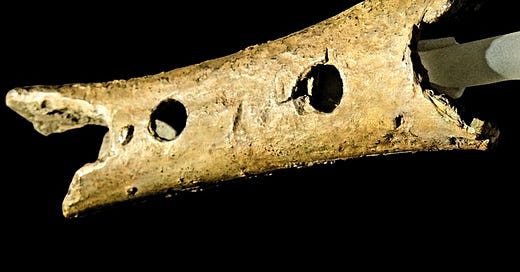I play a few musical instruments, of which flutes of various sorts are my favourites. I have quite a few bamboo flutes, a metal one, and various ocarinas made of ceramic. One of the most unusual is a little flute made by a friend of mine from the bone of a small deer. It has four finger holes and a beeswax mouthpiece, and gives a high, pure sound. Bone …
Keep reading with a 7-day free trial
Subscribe to Stephen’s Substack to keep reading this post and get 7 days of free access to the full post archives.



